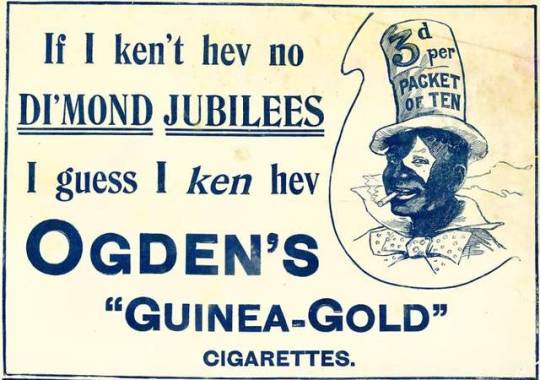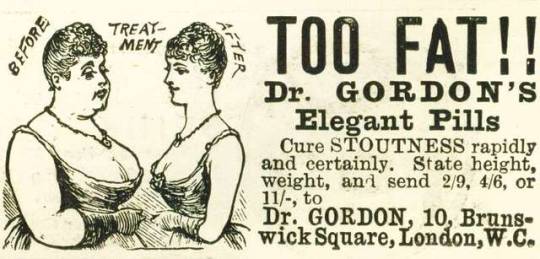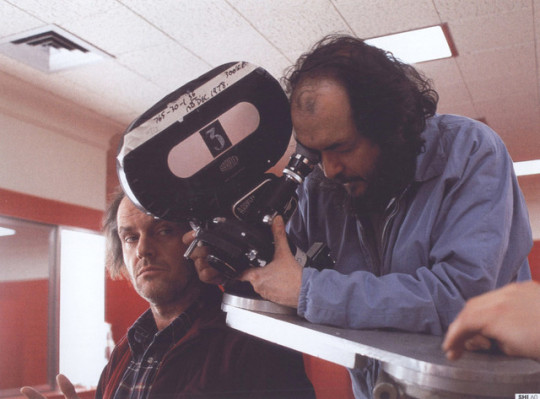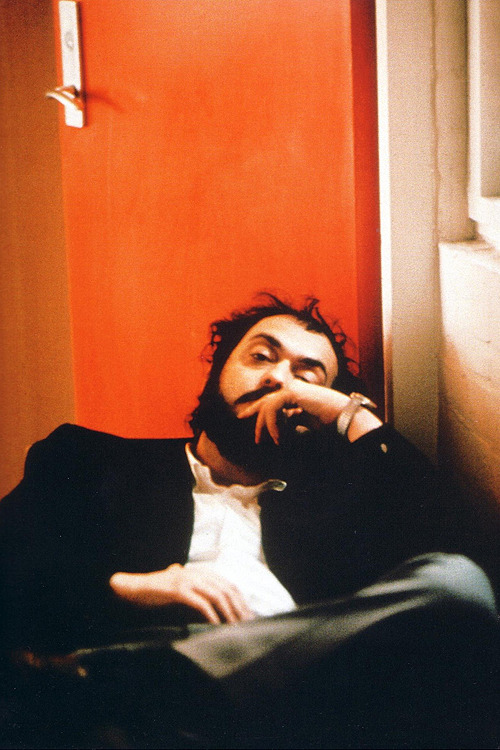I'm what Lara Croft would look like if she discovered carbohydrates, Orthopaedic shoes and SPF 50.
Don't wanna be here? Send us removal request.
Photo


Mordenity: Inventions and Expressions
The purpose of the following disquisition is to analyse and, ultimately, contextualise advertising and the advances made therein during the ‘age of modernity’, a cultural phenomenon that originated in Europe in the nineteenth century. It will regard the diverse components of advertising and the manner in which the components contribute to the zeitgeist of modernity.
The term “Modernism” embodies the movement of rejecting the conventions of early life and substituting these conventions with experimentive and innovative practises.
An alteration/adaption of thinking became evident during the age of modernity. Individualism played a vital role within the movement and resulted in the rejection of tradition and the adoption of iconoclasm. Throughout history it is evident Modernism is characterised by accountability, logic and reason. Science, technology and art advanced, rapidly, as did the extension of colonialism. The advancements ultimately inspired the global expansion of Modernism.
The Industrial Revolution consolidates the conversion to alternative methods of production. For example; from handcrafted production (limited) to mass/bulk production (unlimited). The theory of Positivism had been implemented due to industrialisation. The work of the machine was preferred over the craft of man, as man’s bias was perceived as a hindrance to the functionality of the product (Sturken & Cartwright, 2001). The primary objective of any industry is to secure a profit and, therefore, require modes of promotion; advertising. Before the invention of the Printing Press literature was hand produced; which proved to be costly and tedious.
The Industrial Revolution introduced more efficient steam-powered Printing Presses. The practice of mass production, implemented by the Industrial Revolution, established accessibility to the public. This resulted in the increase of available literacy which, ultimately, resulted in the reduction of illiteracy and the expansion of contemporary ideologies and theories.
One of the most favoured theories involved Biological Evolution, developed and inaugurated by English Naturalist, Charles Darwin in the nineteenth century.
Darwin’s hypothesis involved the theory of Natural Selection which was determined by “the Survival of the Fittest” a term coined by British philosopher and scientist, Hebert Spencer. Unfortunately, European colonists took great advantage of this theory. European colonisation introduced slavery and foreign disease to the indigenous people which often resulted in death of natives. Due to the primitive lifestyle and the lack of immunity to foreign illnesses; indigenous people were deemed unable to cooperate in the progression of Western culture by the colonists. Various means and measures were implemented by white supremacists in order to rid the colonised world of the unfit, often resorting to genocide or the forced breeding/reproduction of autochthonous people with the colonists in order to “breed out colour”; this procedure was known as Assimilation (Pilger, 2014: Online).
Figure 1 is an advertisement of Ogden’s “Guinea-Gold” Cigarettes, published in the nineteenth century. The illustration portrays an African man donning the attire of a clown, which suggests that he is of a foolish and puerile nature. The text implies that the man is inarticulate in terms of the English language and, therefore, is considered uneducated within the confines of the opinion of white supremacy. The portrayal of the African man within the advertisement supplies an adequate understanding of the perception of the white supremacists of the nineteenth century. People of colour were stripped of their culture which, ultimately, resulted in stolen identity. The advertisement serves to substantiate the philosophy of the age of modernity; which embodies the attitude of out with the old and in with the new, despite those who suffered at the expense of the movement (Ogden’s “Guinea-Gold” Cigarettes, 1897:
Online).
Figure 2 is an advertisement for Dr. Gordon’s Elegant Pills, published in 1890. The illustration portrays two women, one large and one slim in stature. The women are the same individual, but supposedly at different times. The advertisement projects significance on the expectations of women in regard to their role in society and physical appearance. The Patriarchy served as a dictatorship during the nineteenth century, especially in regard to the expected role of women. The age of modernity marked a significant change in the issue and women were able to further educate and express themselves. Modernism brought forth a sense of liberation amongst women of all social classes, in fact, many Modernists were women and their influence proved to be just as effective as that of male Modernists.
Edith Wharton, a Modernist author, serves a great example of the influence of female Modernists. Wharton incorporated her consideration of the human condition within her novels. The presence of concern and empathy of the human condition within art and literacy inaugurated a great trend within the age of modernity. During the radical shift different art movements were introduced, such as expressionism, symbolism and minimalism. One is able to identify the movements within the advertisements. For example, the symbolism of the clown attire in figure 1. One could argue that the objective of Modernism was to embrace all social classes (The Mount | Edith Wharton's Home, 2018: Online).
This disquisition has analysed and, ultimately, contextualised advertising and the advances made therein during the ‘age of modernity’, a cultural phenomenon that originated in Europe in the nineteenth century. It has regarded the diverse components of advertising and the manner in which the components contribute to the zeitgeist of modernity.
0 notes
Photo

Stanley Kubrick’s “The Shining”.
The purpose of this essay is to analyse the work of the prominent American film director, Stanley Kubrick. The content within this assignment will evaluate Kubrick’s cinematography alongside one of his most sought-after film productions in history in order to substantiate the public admiration for this Creative Hero.
Throughout Kubrick’s schooling career his learning abilities were considered adequate, however, he took little interest in academics. His father, Jacob Leonard Kubrick, introduced his son to chess in order to strike up an appeal to a game that was/is primarily played by individuals of an academic disposition and Stanley Kubrick quickly became a dexterous competitor. Chess would become an artistic and vital tactic for Kubrick’s directorial endeavours (Kubrick 2018: Online).
Stanley Kubrick’s “The Shining” was considered a major cinematic paragon at the time of its release in 1980 (The Shining 1980). Based on the 1974 novel of the same name by the acclaimed author, Stephen King.
After the 1968 classic “2001: A Space Odyssey” Kubrick received enough admiration and praise to consider himself a genius. According to the cast and crew of The Shining his influence was nothing short of evil genius. Many sources had claimed that Kubrick held himself in high regard during the time of The Shining, in an interview with Vicente Molina Foix, Kubrick admits that he considers some of Stephen Kings clues and dynamics “irrelevant” in regard to The Shining (Kubrick, S, Personal Interview,1980).
One of Kubrick’s most memorable directorial idiosyncrasies was his uncompromising expectations of his actors. Kubrick ensured the actors were as dedicated and invested within his vision as he was, no matter the consequence (LoBrutto 1999: Online). Stanley Kubrick’s 1980 classic The Shining serves as an accurate example of Kubrick’s determination. One of the scenes was shot in 127 takes in order to comply with Kubrick’s standard. Shelley Duvall, who played the leading female role of Wendy Torrance, was instructed to cry for 12 hours a day on set which, allegedly, resulted in severe dehydration. Kubrick’s daughter, Vivian, validated the borderline abuse during the production of “The Shining”, stating that her father would deliberately tyrannized Duvall in order to intensify the timidity of her character (Greene 2016: Online).
Numerous critics have speculated that the inspiration and development behind Jack Torrance’s character was Stanley Kubrick, himself. Jack Torrance, played by Jack Nicholson, is an acclaimed writer who falls victim to the demands of his own work. Kubrick was known to imprison himself with an abundance of projects, much like Jack Torrance.
The cinematographic techniques that were implemented within the film by Kubrick, himself, have often been compared to the likes of an evil genius. The term perfectionism comes to mind when one considers the Mise-en-scène (production) of The Shining (Mateos 2013: Online). One scene, in particular, is evident of this…
Throughout history numerous film critics have reviewed the setting of a film as one of the most significant aspects of production. Toward the beginning of the film the audience is introduced to the “Overlook Hotel”; where majority of the film takes place. Many individuals who have studied the film claim that the Overlook Hotel depicts hell and the main character, Jack Torrance, depicts the devil. The interior design of the hotel is similar to that of a maze/labyrinth. In reference to the composition the viewer is able to draw up a connection to the interior design of a Kubrick film and his love for chess; the connection is characterized by contrasting colours and geometrics/shapes (similar to blocks on a chessboard). The presence of long corridors and high walls centre the attention of the viewer upon the anonymous subject/object from a distance; this method of composition within cinematography/photography is known as “leading lines” as the lines work to lead the eye of the viewer to the twin girls at the end of the corridor. The presence of the leading lines could also work as a framing technique as the lines form rectangular space around the subject.
The angle and pace in which the videographer tracks Danny (the young boy) riding his tricycle on one of the higher floors of the hotel builds terrific suspense for the camera follows young Danny at a short distance from behind; the purpose of this is to create the illusion that viewer is forced to participate in Danny’s adventure without the ability to turn/look back. As one studies this scene one would assume that a potential threat may or may not appear around every corner.
The scene, itself, may be considered rather lurid in terms of the lighting. During the late ‘70s/early ‘80s lighting played a vital role in setting the ambience for the production; dimly lit, shadowy scenes were customary within classics such as “Carrie”, 1976; (Carrie 1976); “Eraserhead”, 1977 (Eraserhead 1977); “The Brood”, 1979 (The Brood 1979) and “Creepshow”, 1982 (Creepshow 1982). If the viewer pays close attention to the direction of light and/or the space surrounding the subject he/she will notice the evident lack of shadow; at the time of release this sort of cinematography was considered unconventional and counterproductive in terms of horror film standards (Elementsofcinema.com 2014: Online).
Kubrick’s work is set apart from the work of other film directors. This is evident in Kubrick’s Mise-en-scène as he does not use this to elucidate setting and/or character, but to challenge and/or manipulate the viewer, for example: directing the eye of the audience, alienating the audience and/or forcing the audience to question certain aspects of human nature; this is/was considered an unusual element within horror films of that time as the primary function of all horror films was to frighten rather than challenge their audience. Allegedly, Kubrick had utilized aspects from his own character in order to accurately develop Jack as a character.
0 notes
Photo

12 April 2018,
The Creative Hero: Stanley Kubrick.
The purpose of this essay is to analyse the life and work of the prominent American film director, Stanley Kubrick. The content within this assignment will evaluate Kubrick’s many idiosyncrasies and one of his most sought-after film productions in history in order to substantiate the public admiration for this Creative Hero.
Stanley Kubrick was born 26 July 1928 in Manhattan, New York City to an Orthodox Jewish family, despite the fact that Kubrick rejected his religious heritage and the practice of Judaism throughout his life (The Conversation 2018: Online). Although Kubrick’s learning abilities were considered adequate, he took little interest in academics. His father, Jacob Leonard Kubrick, introduced his son to Chess in order to strike up an appeal to a game that was/is primarily played by individuals of an academic nature and Stanley Kubrick quickly became a dexterous competitor. Chess would become an artistic and vital tactic for Kubrick’s directorial endeavours. In 1941, Kubrick was gifted a camera from his father and quickly took to the art of photography (Kubrick 2018: Online).
By 1945, Kubrick was working as an apprentice photographer on various assignments.
Stanley Kubrick progressed into film and by 1951 he had made his very first documentary “Day of the Fight”. By winning Chess competitions within Central Park and evoking investors’ interest Kubrick was able to create his very first film “Fear and Desire” in 1953, but it was Kubrick’s “Killer’s Kiss”, 1955 and “The Killing”, 1956 that put him on the map as a recognised Hollywood director (Kubrick 2018: Online).
One of Kubrick’s most memorable directorial idiosyncrasies was his uncompromising expectations of his actors. Kubrick ensured the actors were as dedicated and invested within his vision as he was, no matter the consequence (LoBrutto 1999: Online). Stanley Kubrick’s “The Shining”, 1980 serves as an accurate example of Kubrick’s determination. One of the scenes was shot in 127 takes in order to comply with Kubrick’s standard. Shelley Duvall, who played the leading female role of Wendy Torrance, was instructed to cry for 12 hours a day on set which, allegedly, resulted in severe dehydration. Kubrick’s daughter, Vivian, validated the borderline abuse during the production of “The Shining”, stating that her father would deliberately tyrannized Duvall in order to intensify the timidity of her character (Greene 2016: Online).
Stanley Kubrick’s “A Clockwork Orange” was considered a major cinematic controversy at the time of its release in 1971 (A Clockwork Orange 1971). Based on the 1962 novel of the same name by Anthony Burgess (The International Anthony Burgess Foundation 2018: Online). Kubrick was not sold on the idea of a film adaption at first. Kubrick didn’t appreciate the absurd jargon within the novel, but the actual story line appealed to his better nature. Kubrick, allegedly, stated that if actor, Malcolm McDowell, was unable to play the leading role of Alex- Kubrick would refuse to participate in the production. Not only was the film criticized for the manner in which it portrayed sex, but the manner in which violence was portrayed (Daniels 2018: Online).
Malcolm McDowell proved to be an adequate fit for the role- just as Kubrick had predicted. His dedication to the role was substantiated throughout the duration of the film, especially in various improvised scenes. One incident in particular was a fragrant example of McDowell’s endurance as an actor and Kubrick’s despotic nature as a director; in one scene McDowell is required to wear a medieval contraption that consists of two metal pieces that pulls his eyelids in opposite directions in order to prevent him from blinking or closing his eyes. During the filming of one of these ominous scenes, titled “The Ludovico Technique”- McDowell managed to scratch his Cornea on one of the metal pieces of the contraption which resulted in a substantial amount of pain. McDowell was taken to hospital where he was seen to by medical professionals and shortly after returned to set to proceed with filming (Hero Complex - movies, comics, pop culture - Los Angeles Times 2018: Online).
“A Clockwork Orange” as a film has had a lasting impact on the world of contemporary fashion, music and décor today and serves as a small fraction of Stanley Kubrick’s legacy. Kubrick died of a heart attack in 1999, but his films are still a relevant topic of conversation. Like Alfred Hitchcock and David Lynch, Kubrick was renowned for pushing the boundaries and that is why he is my Creative Hero.
694 words.
2 notes
·
View notes